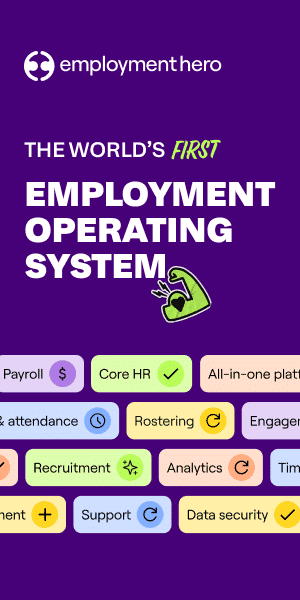As landlords in Tasmania, one of our key responsibilities is ensuring that rental bonds are collected, lodged, and managed properly. A rental bond is not just an additional payment; it is a safeguard that protects us as landlords while also offering protection for tenants. The system in Tasmania has been designed to ensure fairness, transparency, and compliance with the law. By managing bonds correctly, you not only protect your investment but also establish trust and professionalism in your relationship with tenants. In this guide, we will explain what rental bonds are, the rules specific to Tasmania, how to lodge bonds through the online system, how bond claims work, and practical tips that help you avoid disputes. By the end, you will have a full understanding of the bond system in Tasmania and how to manage it effectively as a landlord.
Click To View Our Rental PackagesWhat is a Rental Bond?
A rental bond is a security deposit that tenants pay at the beginning of a tenancy. It acts as financial protection for you in the event that a tenant fails to meet their obligations. This may include unpaid rent, property damage beyond fair wear and tear, or failure to clean the property at the end of the lease. The bond is not income for you, and you cannot access it during the tenancy. Instead, the money is held in trust by the Rental Deposit Authority (RDA) until the tenancy ends.
The RDA is responsible for holding all bonds in Tasmania. This ensures that the funds are secure, impartial, and only released in accordance with the law. For tenants, this creates confidence that their money will not be unfairly withheld. For you as a landlord, the system provides a legally enforceable way to recover costs when obligations are not met.
Rules for Rental Bonds in TAS
The rules surrounding rental bonds in Tasmania are set out in the Residential Tenancy Act 1997. As landlords, we must comply with these requirements in order to remain legally compliant. Here are the most important rules:
1. The maximum bond you can charge is equivalent to four weeks’ rent if the weekly rent is $700 or less. If the rent is above $700 per week, there is no set maximum bond amount, but it must be reasonable.
2. You must lodge the bond with the Rental Deposit Authority within three business days of receiving it. It is illegal to hold the bond yourself or delay lodgement.
3. Both you and the tenant must sign a bond lodgement form, confirming the amount being lodged.
4. The tenant must receive confirmation from the RDA once the bond has been lodged. This provides transparency and ensures compliance.
5. At the end of the tenancy, the bond cannot be released until either both parties agree on the distribution or the Residential Tenancy Commissioner makes a determination in the case of a dispute.
By following these rules, you will avoid penalties and create a transparent and fair rental process that benefits both you and your tenants.
Lodging Bonds Online
The Rental Deposit Authority provides a secure online platform for lodging and managing bonds. The online system simplifies the process for both landlords and tenants by removing the need for paper forms and long waiting times. Lodging bonds online ensures compliance, provides immediate confirmation, and allows you to manage records efficiently.
Here is how the online system works:
– You register as a landlord with the RDA to access the system.
– Once you receive a bond from the tenant, you complete the online lodgement process and submit the funds electronically.
– The tenant is notified and receives confirmation once the bond has been successfully lodged.
– The RDA holds the funds securely until the tenancy ends.
If you are ready to lodge a bond now, you can use the official RDA portal here: Lodge a Rental Bond Online.
Managing the Bond During Tenancy
Once a bond has been lodged with the RDA, it will remain there for the duration of the tenancy. Neither you nor the tenant can access the funds during this period, unless both parties agree to a variation or early refund. The bond remains a neutral security, protecting both parties equally.
As a landlord, your role is to keep detailed records throughout the tenancy. This includes:
– Entry condition reports and photographs of the property at the start of the lease.
– Regular inspection reports.
– Rent payment records.
– Invoices and receipts for any repairs or maintenance work.
These records are vital if you need to make a claim at the end of the tenancy. They demonstrate professionalism and provide evidence to support your case in the event of a dispute.
Bond Claims at the End of Tenancy
When the tenancy ends, the bond must be settled. If the tenant has met all of their obligations, the bond should be returned to them in full. If not, you may claim part or all of it. The process works as follows:
– You submit a claim to the RDA stating the amount you wish to retain and the reasons for the claim.
– The tenant is notified of your claim. They can either agree or dispute it.
– If the tenant agrees, the funds are released according to the agreed distribution.
– If the tenant disputes the claim, the matter is referred to the Residential Tenancy Commissioner, who will review the evidence and make a determination.
This process ensures that both you and your tenant are treated fairly. Claims must always be reasonable and supported by evidence such as condition reports, photos, and receipts.
Examples of Bond Claims
To help you understand how bonds are typically used, here are some examples:
– A tenant leaves with two weeks of unpaid rent. You can claim the outstanding rent from the bond.
– Damage to carpets, walls, or appliances caused by negligence can be claimed if it exceeds fair wear and tear.
– If the property is left dirty and requires professional cleaning, you may claim the cost of cleaning services.
– If rubbish is left behind, you may claim the cost of removal and disposal.
These examples show that the bond exists to cover genuine financial loss. It is not designed as an extra source of income but as protection against real breaches of the tenancy agreement.
Tips for Protecting Your Position as a Landlord
To make the most of the bond system and protect your investment, we recommend the following practices:
1. Always complete a detailed entry condition report at the start of the tenancy, with supporting photographs.
2. Conduct regular inspections and keep written reports of each visit.
3. Keep copies of rent receipts and bank records.
4. Retain invoices and receipts for all repairs and maintenance carried out during the tenancy.
5. Communicate clearly with tenants about their responsibilities, especially regarding cleaning and maintenance.
6. Always use the online system to lodge bonds to ensure compliance and transparency.
Frequently Asked Questions
How much bond can I charge in Tasmania?
You can charge up to four weeks’ rent as bond if the weekly rent is $700 or less. If the rent is higher, there is no maximum limit, but the amount must be fair.
Who holds the bond money?
The Rental Deposit Authority holds all bonds in Tasmania. You cannot hold the bond yourself.
Can I lodge a bond online?
Yes. The Rental Deposit Authority provides a secure online platform for lodging and managing bonds. It is the most efficient way to comply with your obligations.
How do I make a claim on the bond?
You can make a claim through the RDA at the end of the tenancy. If the tenant agrees, the money is released quickly. If they dispute it, the Commissioner will decide.
What happens if I fail to lodge the bond?
If you do not lodge the bond within three business days, you are breaching the law and may face penalties. Tenants can also report non-compliance.
Final Thoughts
As landlords in Tasmania, rental bonds are an essential part of tenancy management. By following the rules, lodging bonds through the Rental Deposit Authority, and keeping accurate records, you protect your investment and remain compliant with the law. The system is designed to be transparent and fair, ensuring tenants’ money is safe while giving you a reliable way to recover costs if tenants breach their obligations. By using the online system and maintaining clear communication, you can make bond management a straightforward and professional process that benefits both you and your tenants.


